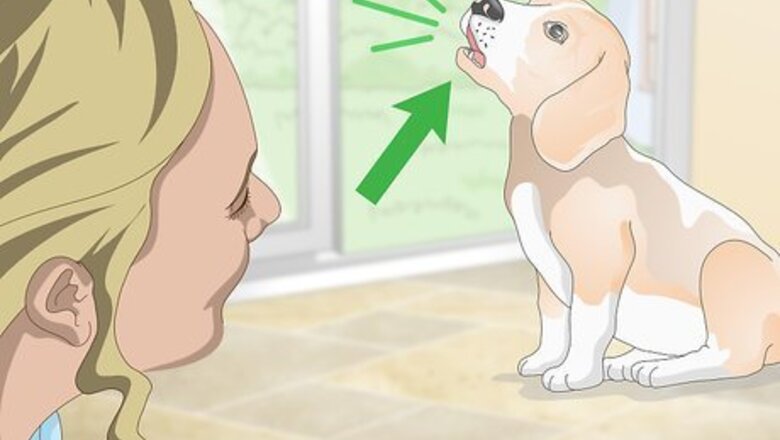
views
X
Research source
Dogs do not typically howl as a means of communicating or interacting with humans. However, dogs are good learners and can be taught to howl on command. If you’d like to train your dog to howl on command, you’ll need to find ways to encourage the behavior. Be aware, though, that you may find it hard to stop your dog from howling once it's begun!
Encouraging the Dog to Howl
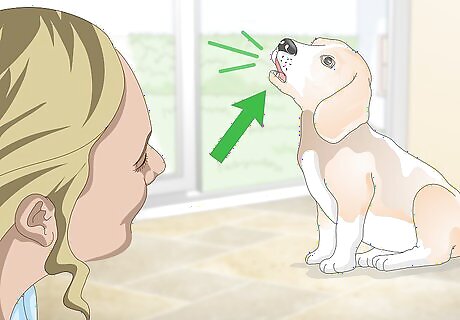
Wait for the dog to howl on its own so you can reinforce the behavior. It’s tricky to make your dog howl before you’ve trained it. So, the first step is often just waiting for the dog to howl. It may be inclined to howl if other nearby dogs start barking and howling, or if it hears a certain high-pitched sound like a fire-engine drive by. Try taking your dog to a dog park if it’s not inclined to howl. Allowing your dog to interact with other dogs may prompt your dog to howl.
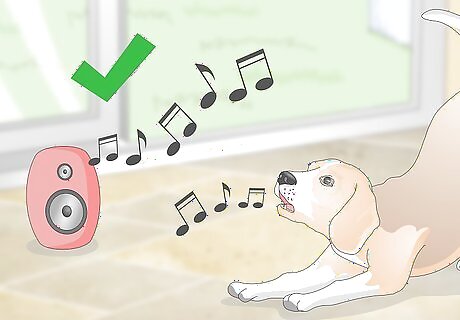
Find a sound that makes your dog howl if waiting doesn’t work. In many cases, a dog that is not inclined to howl will do so if it hears a certain sound or noise. Try playing different genres of music around the house, and see if your dog howls to one. Or, if you (or a friend or family member) play a musical instrument, play it around the house and see if it causes the dog to howl.
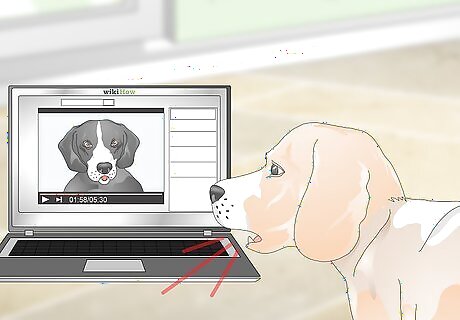
Play online videos of howling dogs to make your dog howl. If music isn’t doing the trick, get on YouTube and search for “dogs howling,” then play some of the videos for your dog. Your dog may be inclined to howl along when it feels like it’s communicating with a real (if pre-recorded) dog. Try a few different videos and see which elicits the best response from your dog.
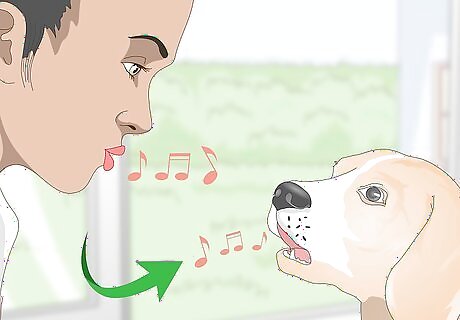
Howl at your dog and see if it mimics you. If music isn’t doing the trick, try mimicking a canine howl when you and your dog are in the same room. A dog is often inclined to mimic its owner’s behaviors—or might just get excited by your loud howling—and should be inclined to howl along with you. If your dog isn’t inclined to howl, don’t harass the animal. Don’t try to force the dog to howl if it doesn’t want to.
Teaching the Dog to Howl on Command
Say “howl” when the dog howls. Once you’ve figured out a way to make your dog howl, you need to start using the command that you’d like to induce the dog to howl. Say "Howl" just before playing a sound that makes your dog howl. If they howl, give them a treat. Next, say "howl" 2-3 seconds before playing a sound that makes your dog howl, and treat them if they howl. Repeat this until your dog starts to howl after you say "howl" and before you play the sound that elicited the vocalization to begin with. Give your dog time to link the “howl” command and the howling behavior. It may take a few weeks for the dog to be fully trained to howl. If you prefer, you could say “sing” instead. Just be sure that you’re consistent with the command you give the dog.

Reward the dog with a treat each time you say “howl.” The two can be done simultaneously. Once the dog begins to howl, say “howl” (or “sing”) in a firm tone. Then give the dog a treat. This will reinforce the howling behavior, and teach the dog to associate the behavior with your command. Continue to reinforce the howling behavior over a period of days (or weeks). During this stage of the training, you may still need to occasionally stimulate the dog to howl by using music, a YouTube video, or your own voice. Be specific with the behaviors that you reinforce. A howl is different than a bark or a yip, and so the dog shouldn’t be given a treat for barking when you want it to howl.
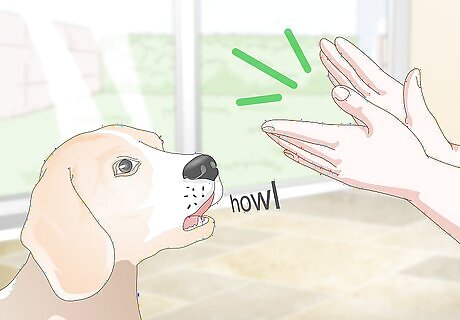
Provide a nonverbal cue if you want your dog to respond to a signal. Train the dog to respond to a different cue instead. If you’d rather not give the “howl” command, try using another cue. Some dog owners may prefer to train their dog to howl when given a nonverbal cue. The process is identical to training the dog to howl to the “howl” command, but you’ll use the nonverbal cue in conjunction with the dog treat. For example, you could train the dog to howl to the sound of a certain piano note or to howl every time you clap your hands or snap your fingers.
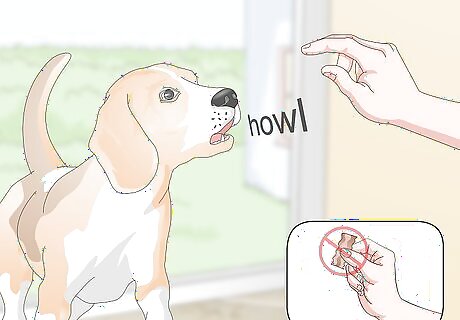
Wean the dog off of the treats. Once your dog has come to understand the connection between hearing the “howl” command and howling, you can begin to cut back on the number of treats it receives. For example, still give the “howl” command but only give a treat half the time. A few days later, cut back to only giving a treat a quarter of the time. Then, cut out the treats altogether. If you like the idea of giving your dog a treat each time it howls on command, you can skip this step. Use the “quiet” command and reward your dog when it stops howling. This can help you control the amount of noise they make later on.

















Comments
0 comment